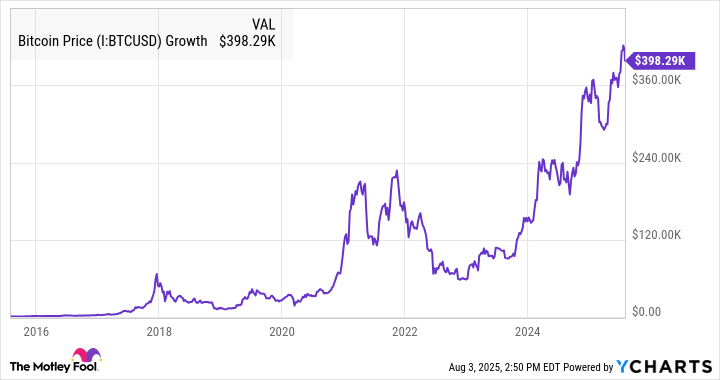If you had the foresight, or simply the good luck, to have invested $1,000 in Bitcoin (BTC -4.87%) a decade ago, and never sold, you would have more than $398,000 today. And keep in mind that this was after an already remarkable run that saw Bitcoin rise from a fraction of a cent in 2010 to about $300 per coin.
You can see Bitcoin's exponential rise over the past 10 years in the chart below:
Bitcoin Price data by YCharts
Bitcoin's not-so-linear rise
As you can see from the chart, Bitcoin's rise has been a bit lumpy over the past decade, and there were a few specific catalysts that helped fuel nearly 400-fold gains in its price:
- There was a massive surge in cryptocurrency awareness and investor interest toward the end of 2017, sending it about 20 times higher than where it started that year.
- Investor appetite for speculation soared during the COVID-19 pandemic, fueled by massive fiscal and monetary stimulus, and cryptocurrencies were a major beneficiary.
The recent crypto-friendly policies and legislative efforts of the Trump administration has also fueled the latest rally to all-time highs in Bitcoin. For example, the Office of the Comptroller of the Currency (OCC) recently clarified that chartered financial institutions can serve as cryptocurrency custodians. This is what prompted SoFi Technologies to announce the return of cryptocurrency trading, and it wouldn't be surprising to see more banks follow.

Image source: Getty Images.
As a final thought, keep in mind that 10 years ago, Bitcoin, cryptocurrency, and financial technology in general weren't anything even close to what they are today. At the time, Bitcoin was used by a very small percentage of early adopters, and had yet to gain mainstream recognition, especially as a digital store of money.






